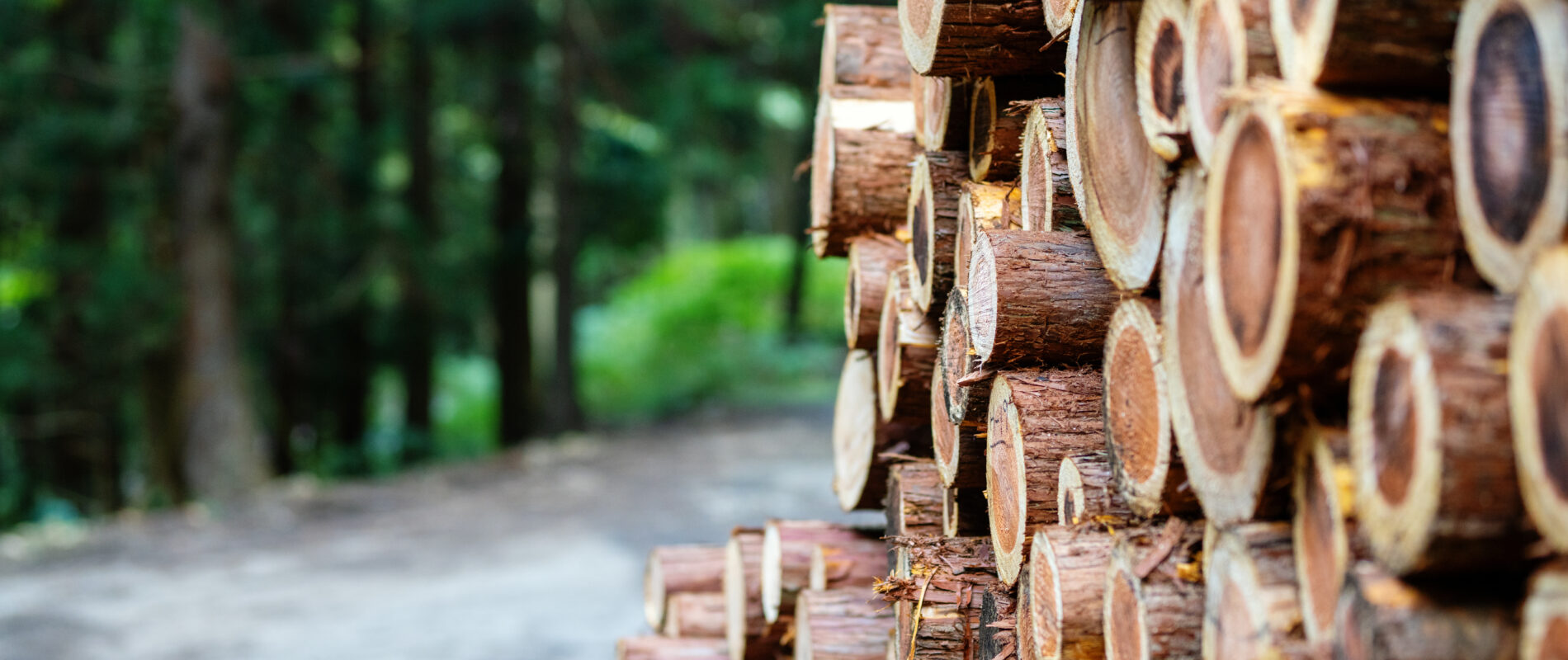In the midst of a pandemic and on the eve of the construction season, the shortage of materials and soaring wood prices are likely to have a 2×4 effect on Quebecers’ projects and wallets.
Over the past year, lumber prices have risen stratospherically. Oriented strand board (OSB), for example, has seen its value jump 300% in 12 months, according to a recent report on construction costs across the country.
“That sounds like a lot. But given the effect the pandemic has had on reawakening the ‘DIY Beaver’ in many households recently, it’s not impossible,” maintains Luc Bouthillier, a professor in the Department of Wood and Forest Sciences at Université Laval.
Construction on the rise
And all the indications are that this upward trend, fueled above all by an unprecedented rise in the construction industry in both Canada and the United States, according to the Conseil de l’industrie forestière du Québec (CFIQ), is likely to continue.
The number of housing starts is exploding across Canada. From the usual 200,000 new homes a year, this year between 225,000 and 250,000 are expected.
Quebec is no exception. Normally, 45,000 homes are built in Quebec every year. No fewer than 60,000 are expected this year. And according to the latest report from Canada Mortgage and Housing Corporation, February housing starts were up 59% on the same period a year ago.
Observers fear the excesses of last summer. Just as the province’s construction sites were getting the go-ahead to reopen, prices for the timber needed to build decks and fences soared by as much as 600% in some regions, recalls Opta, which monitors construction prices across the country.
Northern Europe benefits
Demand is so strong, and prices have become so attractive to the industry, that producers in countries such as Sweden, Finland and several others in South America have begun exporting their wood to the United States,” points out CFIQ economist Michel Vincent. Canada could follow.
And in the face of this inflationary spiral, many hardware stores and building contractors, who obtain their supplies from producers, large sawmills or their distributors, can no longer guarantee their prices for more than a week.
It’s the least surprising thing in the world,” says Richard Darveau, representative of the Association québécoise de la quincaillerie et des matériaux de construction. In the current context, this is one of the only ways retailers can protect themselves.”
This situation complicates relations between contractors, who have to deal with changing tariffs, and consumers, who have to foot the bill. Some, discouraged, will have no choice but to postpone.
It remains to be seen who will benefit most from these price increases.(see text below)
THE FORESTRY SECTOR IN QUEBEC
- A gross domestic product (GDP) of $6 billion per year, or nearly 2% of Québec’s GDP
- 60,000 direct jobs, including 50,000 in wood processing
- Manufacturing shipments of over $19 billion annually
Source: Government of Quebec
LARGE LUMBER COMPANIES / SAWMILL OWNERS
- Resolu Forest Products
- Rayonier Advanced Materials [ex-Tembec]
- White Birch papers
- Rémabec Group
- Barrette-Chapais
- Chantiers Chibougamau
- Commonwealth Plywood
MAJOR LUMBER DISTRIBUTORS
- CanWel Building Materials
- Taiga Building Products
- Produits forestiers AFA
- Garon Distribution
MAJOR HARDWARE RETAILERS
- Lowe’s Canada (RONA,Réno-Dépôt)
- Home Depot
- Home Hardware
- Canac
- Patrick Morin
Source : Agence QMI
BUT WHO EXACTLY PROFITS FROM THESE HIGH PRICES?
But how did we get here? And above all, who in Quebec benefits from these price hikes?
Consumers are clearly the first victims of the situation,” says Luc Bouthillier, a professor in the Department of Forest Sciences at Université Laval. The beneficiaries are harder to identify. The forest industry is very opaque, you know.”
Could it be the foresters who harvest and process wood from the forests? Brokers and wholesalers, who act as intermediaries between sawmills and retailers? Or hardware stores, where most consumers buy their wood?
“I’d say everyone probably benefits, at different levels. But the paper mills are probably the ones who benefit the most,” replies Professor Luc Bouthillier, a leading expert on Quebec’s wood industry.
A view shared by BMR’s new CEO, Alexandre Lefebvre. “It’s definitely the manufacturer,” he says. The distributor’s or merchant’s margin has remained relatively stable […] BMR’s margin hasn’t tripled, like the price of wood. […] BMR’s margin hasn’t tripled, like the price of wood. […] The one who benefits most from the context is the manufacturer.”
Years of catching up?
While the Quebec government’s oversight of forest harvesting is being strongly questioned these days, most are pointing the finger at the big forestry operators as the main culprits and beneficiaries of these price hikes.
“You don’t have to look far,” says Bonaventure MP Sylvain Roy, himself a “former lumberjack”. “I can assure you that those who are lining their pockets are not their employees and entrepreneurs in the regions where these companies operate. They are the ones pocketing, and unfortunately with no concern for redistribution.”
The Quebec Forest Industry Council admits that the industry is benefiting from the context. “Yes, the industry is making more money,” admits its economist Michel Vincent, suggesting a period of catching up. But what do you want? The real estate market is bright red, everyone wants to build.”
In his defense, he points out that the industry is coming out of a 12-year cycle of lean times that began with the subprime crisis and the financial crisis that followed from 2008 onwards.
The industry began to recover 5 years later, until in 2019, the price of 1,000 bdft (board foot) reached $500, double its level from 2007 to 2009, relates Mr. Bouthillier.
This was when the pandemic struck, resulting in reduced production, processing times and delays that amplified demand and led to a further explosion in prices. Result: from $500 in 2019, the 1000 pmp is now close to $1300. A record.
– With the collaboration of Jean-Michel Genois Gagnon
WHY NOT GIVE PRIORITY TO QUEBECERS?
Why shouldn’t Quebec, which sends nearly half of its wood harvest to the U.S., adopt new measures to ensure that it no longer suffers from the current wood shortage?
That’s what Sylvain Roy, PQ MNA for Bonaventure in the Gaspé region, suggested this week in the National Assembly, after the Caquist government refused to initiate a parliamentary commission on forest management.
The Parti Québécois forestry critic considers it abnormal that Quebecers, who collectively possess a “phenomenal forestry potential”, should now be forced to suffer the consequences of a wood shortage. Among them, soaring prices and a lack of products on hardware shelves.
It doesn’t go round
His proposal: the introduction of a “Patriot Act”, a sort of “Quebec clause”, under which the State would require the industry to ensure that wood harvested from its public forests serves the needs of Quebecers first and foremost.
Right now, wood is going over our heads to serve Americans,” he says. And in the meantime, for lack of a better or more affordable wood, we’re forced to use aluminum to build our homes. When I look at that, when I think about all the wood we have, I think it’s all wrong.”
The Association québécoise de la quincaillerie et des matériaux de construction seemed attracted by the idea. When contacted by Le Journal, the Corporation des entrepreneurs généraux du Québec gave the same welcome. We’re experiencing a real supply problem,” insists CEO Éric Côté. Are we going to end up having to import wood to replace the domestic wood we sell abroad?”
Source: 300% rise in wood prices | TVA Nouvelles






